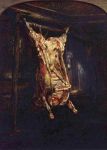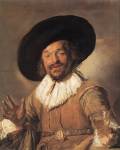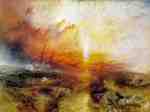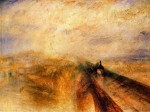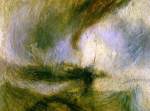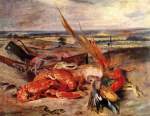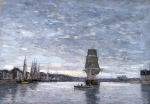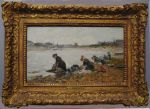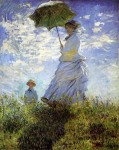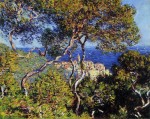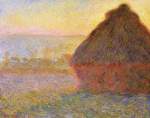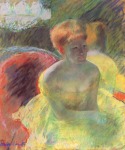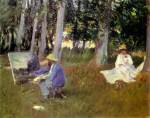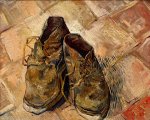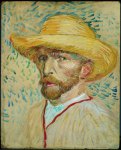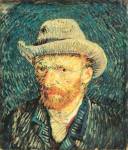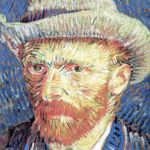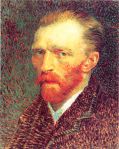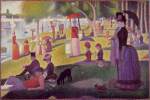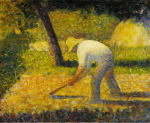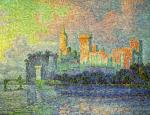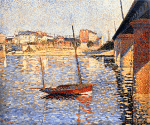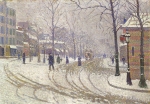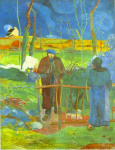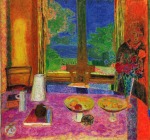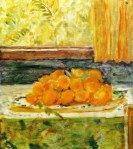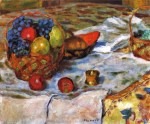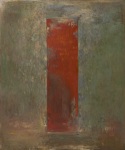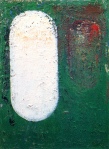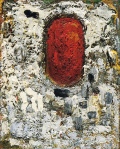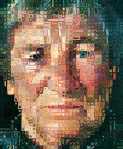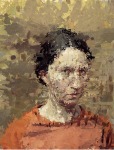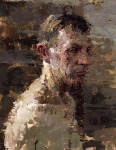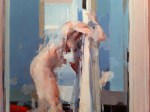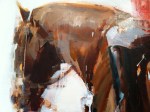The Beauty of Shapes
September 24, 2011 § Leave a comment
“We look up and see a coloured shape in front of us and we say – there is a chair. But what we have seen is the mere coloured shape. Perhaps an artist might not have jumped to the notion of a chair. He might have stopped at the mere contemplation of a beautiful color and a beautiful shape…” -Alfred North Whitehead
“Remember that a picture, before being a battle horse, a nude woman, or some anecdote, is essentially a plane surface covered with colors assembled in a certain order.” -Maurice Denis (1890)
How often we forget the simple truth of Maurice Denis’ statement as we peer into our three-dimensional world and try to “make” a tree, a face, a figure, or a teacup on our canvas. Annie Dillard’s essay on seeing, from a previous post on this blog, reminds us of just how far we’ve come from the infantile state of innocence when visual sensation was just “color-patches unencumbered by meaning.” The struggle to regain this innocent vision of color and shape is a large part of our “training” as artists. We want to be able to see our sensations, not just the things those sensations add up to, because this kind of seeing is what allows us to form questions that we can take to the palette. What is that hue? What is its tonal value? What is it’s degree of saturation or intensity? These three questions are the Holy Trinity of color mixing. (There’s a fourth, but we’ll save it for another post.)
But mixing color is only one piece of the puzzle. The color has to have a boundary or shape. This is the meeting place of drawing and painting. Stripped of the third dimension, the world’s forms and spaces precipitate two-dimensional shapes. Out of this distilled essence painters compose their paintings. Here are some painters who remind us of the beauty of shapes, all kinds of shapes. That’s what paintings are made of.
Self-Portraits
March 28, 2011 § 5 Comments
Few subjects in art rival the human face and figure for psychological impact and technical difficulty. Our first clear vision in this world is that of our own mother’s face. Thereafter, the human face holds encoded meanings that become a life’s study.
In painting our own, or others’ likeness the fundamental challenge is learning to see and simplify the major and minor color shapes that the head presents to our eyes, instead of just the details of eyelashes, nostrils and lips. We may wish, in painting the head, to reveal the inner being of our sitter, but that will never happen without careful attention to the outer form. The inner and the outer are inseparable. Charles Hawthorne, the celebrated teacher of Edwin Dickinson and Hans Hoffman, relates a story about painting the portrait of a bald man, becoming fascinated by the colors he observed in the man’s head, one color spot against another, and finding later that he had accurately captured the sitter’s likeness with hardly a conscious thought as to how he was doing that. Seeing is a kind of knowledge.
Following is a gallery of artists’ self-portraits in a loosely chronological order from Rembrandt’s early self-portraits to the work of some notable contemporary painters. Every generation of artists, it seems, is similarly compelled to make its own statement of identity.
In his 63 years on earth, Rembrandt Harmenszoon Van Rijn (1606-1669) painted 88 self-portraits. He first painted himself in his twenties. They are masterful, proud, and just a bit cocky – the new kid on the block hanging out his shingle as a portrait painter. Caravaggio had already come and gone, alerting Rembrandt’s generation to the splendors and mysteries of raking light.
Rembrandt continued to use himself as a model throughout his life documenting his aging face through prosperous times and through the financial setback that beset him late in life. The body of self-portraits that he left us are a great legacy to the world. They have much to teach the aspiring painter about how light and shadow activate an image, how it sculpts the planes of the head and sets up a dialogue between form and space. Rembrandt’s self-portraits also teach us that content or meaning is not something that the painter needs to consciously program or add on. The inner state of the sitter and the outer forms are intimately involved in each other. Only the honest, attentive gaze will reveal it.
- Sofanisba Anguissola, 1532-1625
- Velazquez
- Rembrandt
- Elisabeth Vigee`-Lebrun, 1745-1852
- Joshua Reynolds
- Chardin
- Goya
- Courbet
- Degas
- Degas
- Cezanne
- Gauguin
- Matisse
- Picasso
- Marie Louise Motesiczky
- Vuillard
- Vuillard
- Vuillard
- Beckmann
- Lovis Corinth
- Lovis Corinth
- William Orpen
- Hopper
- Edwin Dickinson
- Edwin Dickinson
- Fairfield Porter
- Louisa Matthiasdottir
- Stanley Spencer
- Alfred Leslie
- Lucien Freud
- Avigdor Arikha
- Catherine Kehoe
- Catherine Kehoe
- David Campbell
- Daniel Dempsey
- Frank Hobbs
Rembrandt Laughing
February 18, 2011 § Leave a comment
A small painting, on copper, of a young man laughing, has recently been authenticated as one by the young Rembrandt who was in his twenties when he painted it. The work is on loan to the Toledo Museum and will be on display in Gallery 24 until May 1, 2011. Ernst van de Wetering, Chair of the Rembrandt Research Project in Amsterdam will give a talk at the Toledo Museum on Thursday, March 3 at 7 p.m.
“Le Petit Tache:” Divisionist Technique and Optical Mixing
February 7, 2011 § 5 Comments
Impressionist & Divisionist Technique
Landscape was the genre in which divisionist techniques were born and most developed, beginning with Turner and Delacroix who began to exploit the observations and theories of Chevreul and Goethe on the optical mixing of color by painting with distinct touches of unblended paint, side by side, allowing the color to “mix” in the eye.
The work of Turner and Delacroix, as well as that of Goethe and Chevreul in the early 19th century, had a profound impact on Monet, Pissaro, Sisley, Renoir, and others of the group that later became known as “Impressionists.” As students, their academic training taught them to shade forms off into brown and black in the shadows. These young painters could see that shadows were actually colored, and that, in fact, the whole visual field was shimmering with color sensation. Local color, the notion that things have a distinct, unchanging color, was shattered in the new awareness of how color, light, and context influence the perception of color. Their dissatisfaction with the limitations of academic teaching led them out of the studios into nature to work out a new way of painting based on the broken touch.
The technique itself was not new but its application was. The Impressionists built on an academic method widely taught in the ateliers of Paris known as the “petit-tache,” or little touch, a technique of applying unblended touches of color which later would be blended with a soft, badger-hair brush to disguise the effect and create a smoother, more refined look. The Impressionists were reviled, not only for their subject matter, which confronted every day realities of contemporary life as opposed to the classicizing conceits of academic painting, but also for exhibiting finished works with this broken touch, a direct confrontation to the tastes of the day. Seurat, and Signac developed the divisionist technique into the style known as Pointillism, based on their growing interest in the scientific application of color physics to painting.
Painters like Cezanne, Van Gogh, Gauguin, Serusier, Bonnard, and many others, were less interested in the science of color than they were in its emotional impact, and pushed color saturation into new subjective realms, developing very personal styles that derived from the use of the “petit-tache.”
- Rembrandt
- Frans Hals
- Frans Hals
- Turner
- Turner
- Turner
- Delacroix
- Boudin
- Boudin
- Monet
- Monet
- Monet
- Monet
- Cassatt
- John Singer Sargent
- Van Gogh
- Van Gogh
- Van Gogh
- Van Gogh
- Van Gogh
- Seurat
- Seurat (detail)
- Seurat
- Seurat
- Signac
- Signac
- Signac
- Signac
- Gauguin
- Serusier
- Bonnard
- Bonnard
- Bonnard
- Jake Berthot
- Jake Berthot
- Jake Berthot
- Chuck Close
- Ann Gale
- Ann Gale
- Alex Kanevsky
- Alex Kanevsky
- Alex Kanevsky


















































































